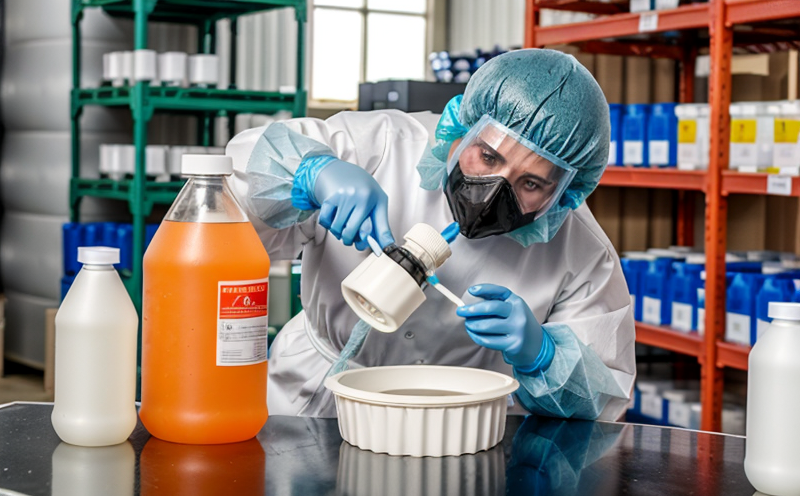ISO 11737-1 Bioburden Testing on Packaging Materials
The ISO 11737-1 standard is a critical part of ensuring the microbiological safety and quality of packaging materials used in food, pharmaceutical, and medical device industries. This test evaluates the initial microbial load (bioburden) present on packaging materials before they come into contact with products that require stringent hygiene standards.
Bioburden testing is essential because it helps identify potential sources of contamination early in the manufacturing process. By measuring the bioburden, manufacturers can take necessary steps to reduce microbial risk, ensuring product safety and quality throughout distribution and use. This test aligns with broader quality management systems such as ISO 9001 and GMP (Good Manufacturing Practice), which emphasize the importance of preventing contamination from the outset.
The testing process involves several key steps: sampling, preparation, inoculation, incubation, and enumeration. During sampling, specific areas on the packaging are selected to minimize the risk of introducing contaminants during the test. The samples are then prepared in a controlled environment to ensure they remain uncontaminated until analysis.
Inoculation involves transferring the sample into appropriate media that supports microbial growth. Incubation follows, where the samples are kept under optimal conditions for bacterial and fungal colonies to develop. After incubation, the number of colonies is counted using standardized methods, such as those outlined in ISO 11737-1.
The results of this testing provide valuable insights into the packaging material's cleanliness and potential risks. These findings are critical for quality managers, compliance officers, and R&D engineers who must ensure that all materials meet stringent safety standards. For procurement teams, these tests help in selecting suppliers who adhere to rigorous hygiene protocols.
The bioburden test is not just a one-time measurement; it should be part of an ongoing quality assurance program. Regular testing can identify trends or changes in the packaging material's cleanliness over time. This proactive approach helps manufacturers stay ahead of potential contamination issues and maintain product integrity throughout its lifecycle.
Understanding the bioburden test is crucial for those working with packaging materials that come into direct contact with products requiring high hygiene standards. By adhering to this standard, companies can demonstrate their commitment to maintaining the highest level of safety and quality in their production processes.
Scope and Methodology
The ISO 11737-1 standard defines a comprehensive approach to bioburden testing, which includes several key elements:
Sampling Strategy: Sampling should be representative of the packaging material's surface area. This ensures that any microbial presence is accurately reflected in the test results.
Inoculation Media: The standard specifies the use of media that supports both bacterial and fungal growth, ensuring a wide range of potential contaminants can be identified.
Incubation Conditions: Incubation is carried out under controlled conditions to facilitate optimal growth of microorganisms. This includes maintaining specific temperature and humidity levels.
Enumeration Techniques: Enumeration involves counting the number of viable colonies using visual inspection or automated colony counters. These techniques must adhere to internationally recognized standards like ISO 11737-1 for accuracy.
The methodology also includes post-test analysis, which evaluates the bioburden levels and compares them against acceptable limits specified in relevant regulatory guidelines. This helps ensure that the packaging material meets all necessary safety and quality criteria before use.
Benefits
Implementing ISO 11737-1 bioburden testing offers numerous benefits, particularly for industries where product contamination can lead to severe health risks. Here are some key advantages:
Enhanced Product Safety: By identifying and controlling microbial loads early in the production process, companies can significantly reduce the risk of contamination during packaging.
Compliance with Regulations: Adhering to international standards like ISO 11737-1 ensures that packaging materials meet regulatory requirements, thereby avoiding potential legal issues and fines.
Improved Quality Assurance: Regular bioburden testing becomes an integral part of the quality assurance process. It helps in maintaining consistent product quality across batches and production runs.
Promotes Supplier Accountability: Suppliers who consistently meet bioburden standards are more likely to be reliable partners, ensuring long-term business relationships built on trust and integrity.
Customer Trust and Satisfaction: Demonstrating a commitment to product safety through rigorous testing enhances customer confidence. This can lead to increased market share and better customer satisfaction.
In summary, ISO 11737-1 bioburden testing is not just a compliance measure but a proactive approach to ensuring the highest level of product safety and quality in industries where contamination risks are high.
Why Choose This Test
Selecting ISO 11737-1 bioburden testing for packaging materials is a strategic decision that offers significant advantages over other methods:
International Recognition: As an ISO standard, this test is widely recognized and accepted globally. This ensures consistency and reliability across different markets.
Scientific Rigor: The methodology is based on sound scientific principles, ensuring accurate and reproducible results. This is particularly important for industries where precision is critical.
Comprehensive Coverage: The test covers a broad spectrum of potential contaminants, including both bacteria and fungi. This comprehensive approach ensures that no significant microbial risks are overlooked.
Flexibility: ISO 11737-1 provides flexibility in terms of sample size and testing frequency, allowing companies to tailor the test to their specific needs and production schedules.
Supports Continuous Improvement: Regular bioburden tests can highlight areas for improvement in packaging materials. This continuous feedback loop helps drive ongoing quality improvements.
In conclusion, choosing ISO 11737-1 bioburden testing is a smart choice that aligns with global best practices and supports the highest standards of product safety and quality.





